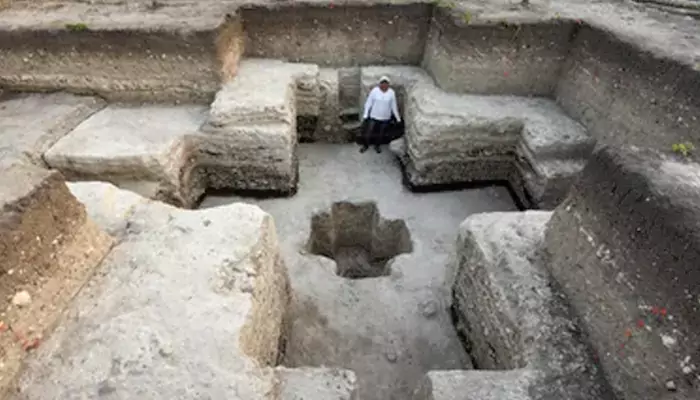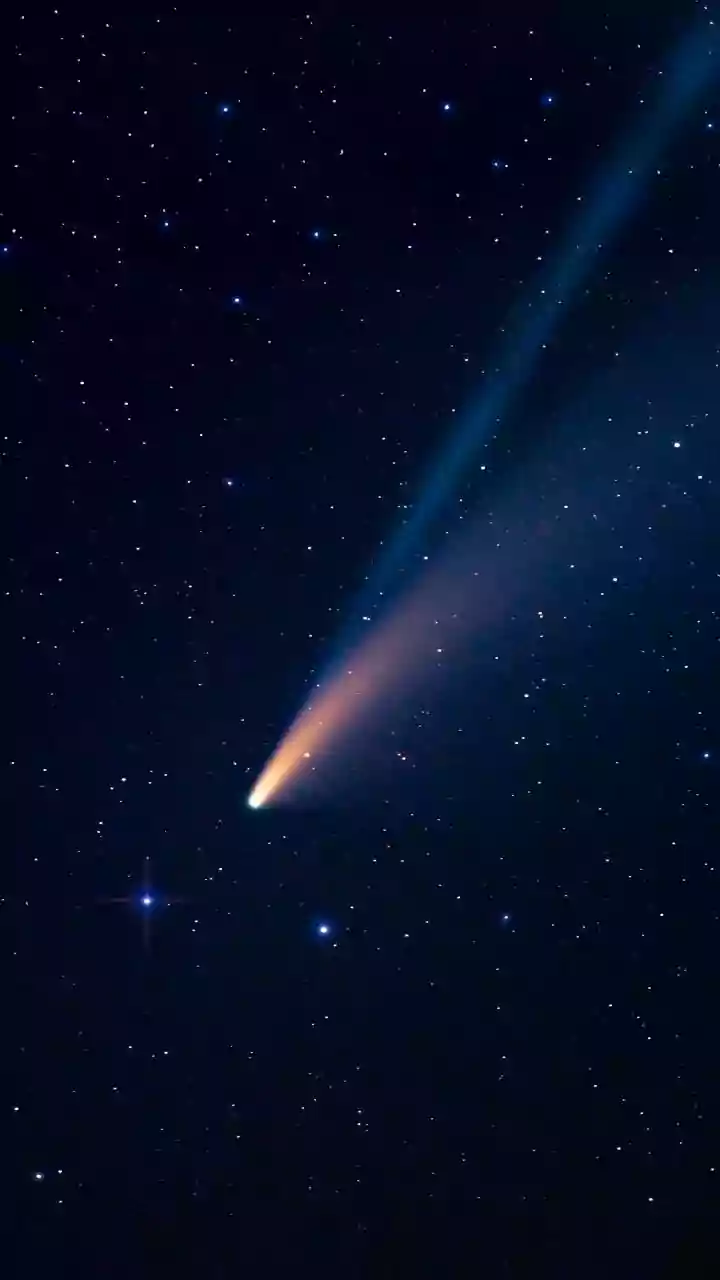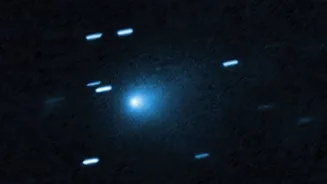Here are today’s most important updates from the realm of Science and Space.
Golden Survivor: Rare Comet Glows After Brushing Past the Sun
A spectacular sight has captured the attention of skywatchers across the US
as astronomers track a rare and stunning comet-C/2025 K1 (ATLAS). Unlike most comets that typically shine green or blue under sunlight due to their varying chemical compositions, this one stands out with its remarkable golden glow. Astronomer Dan Bartlett, observing the celestial visitor from June Lake, California, explained that the comet was not expected to survive its close approach to the Sun on October 8, when it reached its perihelion distance of 0.33 AU. However, it defied expectations and endured the encounter, now displaying a unique red, brown, and golden coloration that is seldom observed in comets.
Ancient Maya Built the Universe in Stone and It’s Been Found in Mexico

A colossal structure in southern Mexico that dwarfs every other building in the Maya world was probably built without the use of forced labor, centuries before the emergence of the empire’s structured hierarchy or elite rulers, according to a new study. Known as Aguada Fénix, the colossal project was most likely conceived as a model of the cosmos, and spans an incredible 9 by 7.5 kilometers (5.6 by 4.7 miles). The overall size of the structure therefore rivals or exceeds that of the most powerful cities in ancient Mesoamerica, most of which were constructed centuries or even millennia after Aguada Fénix.
Beyond the Stars: JWST Builds First 3D Map of an Exoplanet’s Atmosphere

Astronomers have used the James Webb Space Telescope to build the first 3D map of a distant planet’s atmosphere. The target, WASP-18b, is an ultra-hot Jupiter with temperatures near 5,000°F, so extreme that water vapor disintegrates. The map revealed a glowing hot spot and cooler surrounding zones, confirming models of atmospheric breakdown under intense heat. The method marks a major advance in studying distant worlds. One region is so intensely hot that it breaks apart water vapor, according to findings. Classified as an “ultra-hot Jupiter,” it is roughly ten times the mass of Jupiter and orbits its star in just 23 hours. Scientists used a technique known as 3D eclipse mapping (also called spectroscopic eclipse mapping) to build the planet’s temperature map.
Think It’s Safe? Common Supplement Linked to Heart Damage in New Study

New research into a popular sleeping aid has some scientists worried about long-term usage. An analysis of adults with insomnia, which has not yet been peer-reviewed, has found that people prescribed melatonin for more than a year are at greater risk of heart issues. Melatonin is typically considered safe and well-tolerated for short-term use among those who are not pregnant or breastfeeding. That means around 1 to 2 months. A melatonin supplement replicates a hormone naturally produced by the brain to help keep the body's internal clock ticking. Taking this substitute at the end of the day can help some people fall asleep and stay asleep.
















